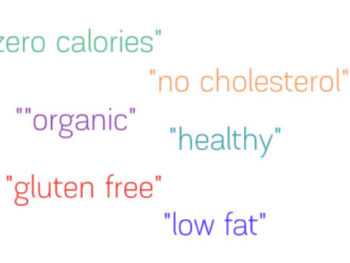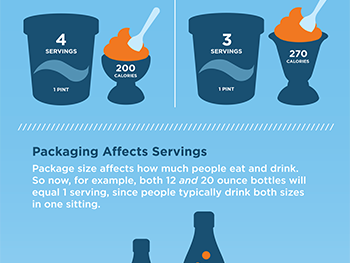Below is my blog post for Huffington Post: FDA wants to know what you consider a ‘healthy” food product.
You can also read it HERE.

What do you consider a healthy food product?
As a nutritionist, what comes to my mind are whole foods such as fruits, vegetables, nuts, beans, and fish. Few people would debate such foods as being healthy and nutritious.
What gets tricky is how the definition pertains to many foods with package labels that are allowed to make claims such as “healthy,” “low in fat” or “good source of.”
The Food and Drug Administration (FDA) announced last week that it plans to redefine what “healthy” means on packaged food labels.
For decades, FDA had defined a product as “healthy” if it met certain criteria such as low-fat, low saturated fat and cholesterol, relatively low in sodium, and contained at least 10% of the daily value (DV) for vitamins A or C, calcium, iron, protein, or fiber.
Certain packaged food products clearly would not qualify as “healthy.” Several years ago, for example, I served as the nutrition expert for a legal case against the manufacturer of an unhealthy food product which used the “healthy” claim on its package label but its product clearly was not healthy.
Dietary advice has evolved over the years and the definition of “healthy” on a package label has gotten tricky. If a food product contains mostly nuts or avocados, for example, it will not qualify as “healthy” because it will not be low in fat (even though the type of fat is healthy). Yet a fat-free chocolate pudding or a sugary cereal such as Frosted Flakes may, indeed, meet the “healthy” definition.
This issue has played out recently.
Back in 2015, the manufacturer of a fruit and nut bar received a warning letter from FDA that they were not allowed to label their product as “healthy.” After petitioning the FDA, stating that their product contained fats, the FDA reversed its course allowing the company to continue to use the “healthy” claim on its label.
Now, FDA will be working to redefine what the “healthy” claim on a package label should mean.
FDA states:
Redefining “healthy” is part of an overall plan to provide consumers with information and tools to enable them to easily and quickly make food choices consistent with public health recommendations and to encourage the development of healthier foods by the industry….
…Public health recommendations for various nutrients have evolved, as reflected by the 2015-2020 Dietary Guidelines for Americans and the updated Nutrition Facts label. For example, healthy dietary patterns now focus on food groups, the type of fat rather than the total amount of fat consumed and now address added sugars in the diet. Also, the nutrients of public health concern that consumers aren’t getting enough of have changed.
Effective immediately, FDA will allow manufacturers to use the “healthy” claim for the following products that: 1) are not low in total fat, but have a fat profile makeup of predominantly mono and polyunsaturated fats; or
(2) contain at least ten percent of the Daily Value (DV) per reference amount customarily consumed (RACC) of potassium or vitamin D.
As a nutritionist advising clients and specializing in portion control, claims on food labels can often be misinterpreted. For example, just because a food product is labeled healthy or low in fat, for example, does not mean that you can eat as much as you want. And more is not usually better—it simply means you will be taking in more calories.
And, healthy foods such as whole fruits and vegetables which do not bear package labels are among the “healthiest” foods you can buy.
Nonetheless, I do feel that the “healthy” definition is outdated and does need to be revised in light of current nutrition advice.
FDA now wants to know what you think. Some points FDA wants stakeholders to consider:
- What types of food should be allowed to bear the term ‘’healthy?”
- What are the public health benefits of defining the term “healthy”?
- Is “healthy” the best term to characterize foods that should be encouraged to build healthy dietary practices or patterns?
- What other words or terms might be more appropriate (e.g., “nutritious”)?
- What nutrient criteria should be considered for the definition of the term “healthy?”
You can weigh in here.



